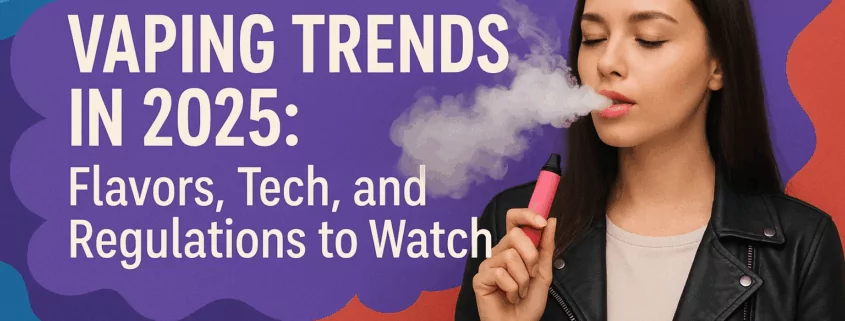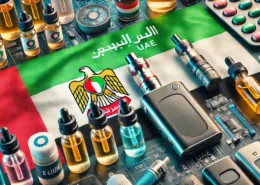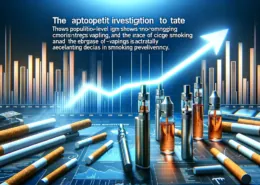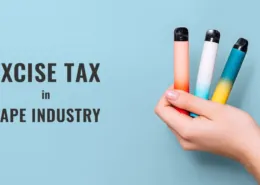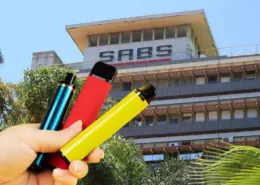Vaping Trends in 2025: Flavors, Tech, and Regulations to Watch
The vaping industry has always been fast-moving, but 2025 is shaping up to be a pivotal year. Shifting consumer tastes, advancing technology, and evolving regulatory frameworks are combining to reshape how vape products are designed, marketed, and consumed.
While the core appeal of vaping—flavor variety, reduced odor, and perceived harm reduction compared to smoking—remains intact, the details are changing quickly. For brands, retailers, and consumers, understanding these trends is essential to staying ahead in a marketplace where innovation and compliance must work hand-in-hand.
1. Flavor Trends: Balancing Creativity and Compliance
Flavors are the heartbeat of the vaping experience. In 2025, flavor trends are being driven not only by consumer preference but also by an increasingly complex regulatory environment.
Fruit and Ice Remain Popular – Where They’re Allowed
In regions where flavored vaping products are still permitted, fruit-forward blends continue to dominate. Strawberry, watermelon, blueberry, mango, and tropical mixes remain top sellers, often paired with cooling agents like menthol or WS-23 to deliver a refreshing “ice” sensation. These flavors appeal to both new vapers seeking sweetness and experienced users who enjoy a bold, crisp inhale. If you’re looking to buy vape products online, you can visit here https://trehouse.com/collections/delta-9/.
The Rise of Tobacco, Menthol, and Neutral Profiles
In contrast, flavor bans in several U.S. states and certain EU countries have prompted manufacturers to focus more heavily on tobacco, menthol, and unflavored (neutral) e-liquids. While these may seem less exciting, advanced flavor chemistry is improving their complexity—rich tobacco notes layered with nutty undertones, or menthol blended with subtle herbal coolness.
Flavor Compliance as a Selling Point
Forward-thinking vape brands now highlight flavor compliance as part of their marketing. Rather than pushing boundaries and risking enforcement actions, they design profiles that satisfy regulations while retaining appeal. This dual approach—consumer-friendly yet regulator-approved—will become standard in 2025 and beyond.
2. Technology Evolution: Smarter, More Sustainable, and Regulation-Ready
If flavors draw customers in, technology is what keeps them coming back. The vaping devices of 2025 are more sophisticated than ever, with engineering aimed at improving flavor delivery, coil longevity, sustainability, and safety.
Shift from Disposables to Refillable Systems
A major trend is the move away from single-use disposable vapes toward refillable pod systems and tank-based devices. Environmental concerns, rising costs, and outright bans—such as the U.K.’s nationwide disposable vape ban effective June 2025—are accelerating this shift. Refillable devices not only reduce waste but also give users more flexibility in choosing e-liquids.
Advanced Coil Technology
Ceramic and mesh coils have become industry standards, delivering richer flavor and more consistent vapor production. These materials also extend coil lifespan, reducing waste and lowering long-term costs for consumers. As a result, vapers in 2025 expect a smoother experience without the burnt taste that plagued older coil designs.
Battery and Charging Improvements
USB-C charging is now nearly universal, with larger-capacity batteries allowing for extended use between charges. Some manufacturers are experimenting with quick-charge capabilities, bringing devices to full power in under 30 minutes. Battery management chips are also more advanced, optimizing power output and protecting against overheating or short circuits.
Compliance-Driven Features
Age verification technology is becoming more common, particularly in retail packaging and online sales. Some high-end devices even include firmware-based age locks, requiring activation through an age-verified account. This reflects how closely tech innovation is now tied to legal compliance.
3. Regulatory Landscape: A Tightening Framework
Regulations have always played a defining role in vaping, but in 2025, they are more influential than ever. Global markets are taking divergent approaches—some encouraging vaping as a harm reduction tool, others imposing strict controls.
United States
The FDA continues to tighten enforcement around unauthorized vape products, particularly flavored disposables. Retailers face hefty fines for selling unapproved products, leading many to limit stock to authorized tobacco-flavored devices. Importers are seeing increased seizures of shipments that fail to meet compliance standards.
United Kingdom
The U.K. is implementing one of the most significant changes of 2025 with its ban on disposable vapes. This policy is designed to curb youth access and reduce environmental waste. Manufacturers are pivoting to promote refillable devices, and retailers are preparing trade-in and recycling programs to manage leftover stock.
European Union
EU nations are gradually harmonizing regulations under the Tobacco Products Directive (TPD), with discussions underway about stricter flavor rules and packaging requirements. Some countries are pushing for reduced nicotine caps in e-liquids.
Global Perspective
Countries such as Australia and New Zealand are also rethinking their policies, weighing public health goals against consumer demand. This means international brands must adapt product lines for multiple regulatory regimes, a challenge that requires both agility and strong compliance infrastructure.
4. Consumer Shifts and Market Outlook
The vaping market in 2025 is shaped not just by laws and tech, but by consumer mindset.
Sustainability as a Selling Point
Eco-conscious consumers increasingly prefer refillable systems, recyclable packaging, and brands that actively address environmental concerns. Companies that position themselves as sustainable earn both customer loyalty and regulatory goodwill.
Preference for Premium and Niche Products
There’s a growing segment of consumers willing to pay more for premium experiences—artisan e-liquids, high-end mods, and boutique hardware. Specialty vape shops that cater to this market are thriving despite tighter regulations.
Crossovers with Other Cannabis-Derived Products
An interesting trend is the integration of vaping technology with hemp and cannabis derivatives. Some consumers are exploring delta 9 vape products, particularly in markets where they are legal, as an alternative to traditional e-liquids. This crossover trend shows how vaping innovation extends beyond nicotine and into other wellness or recreational categories.
Final Thoughts: Preparing for the Next Wave
The vaping industry in 2025 is being reshaped on three fronts—flavors, technology, and regulations. For businesses, success will come from staying compliant without sacrificing user experience, embracing refillable and sustainable technologies, and adapting flavor portfolios to match both consumer demand and legal frameworks.
Consumers, meanwhile, will continue to enjoy more sophisticated devices, cleaner flavor delivery, and a broader range of compliant choices. Those open to exploring new categories, such as delta 9 vape products where legal, will find even more variety on the horizon.
The takeaway? Vaping is not going away—it’s evolving. And those who understand the 2025 trends will be best positioned to thrive in the years ahead.
- The Ultimate Guide to Glass Bongs: Elevate Your Smoking Experience - August 12, 2025
- Tourists Face Fines for Nicotine Pouches in France & More - August 12, 2025
- France Bans Smoking on Beaches, But What About Vaping? - August 12, 2025

